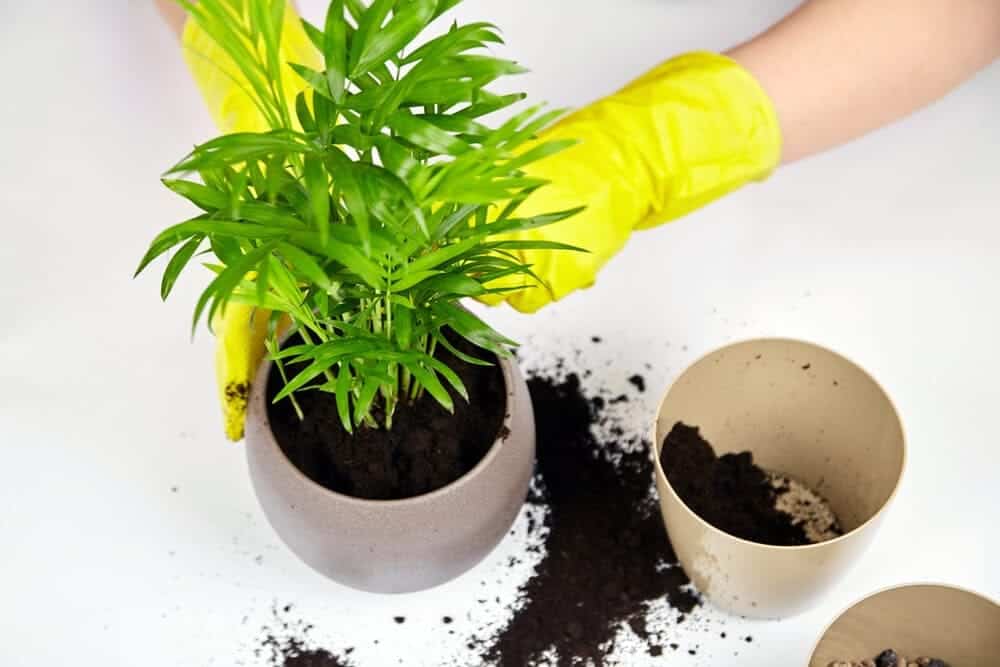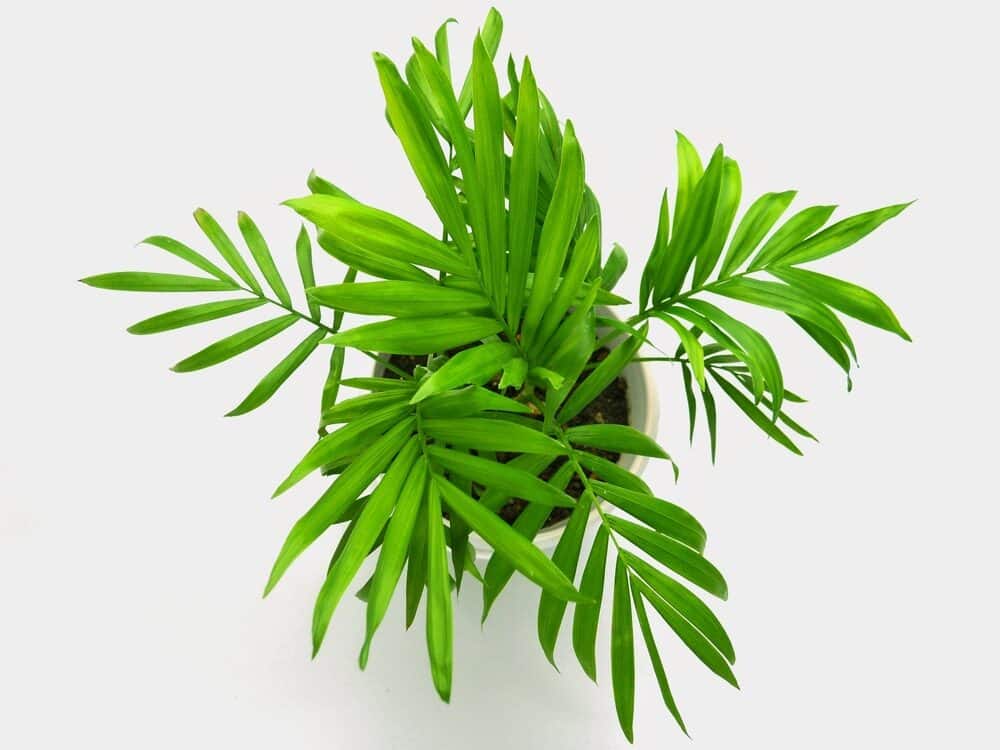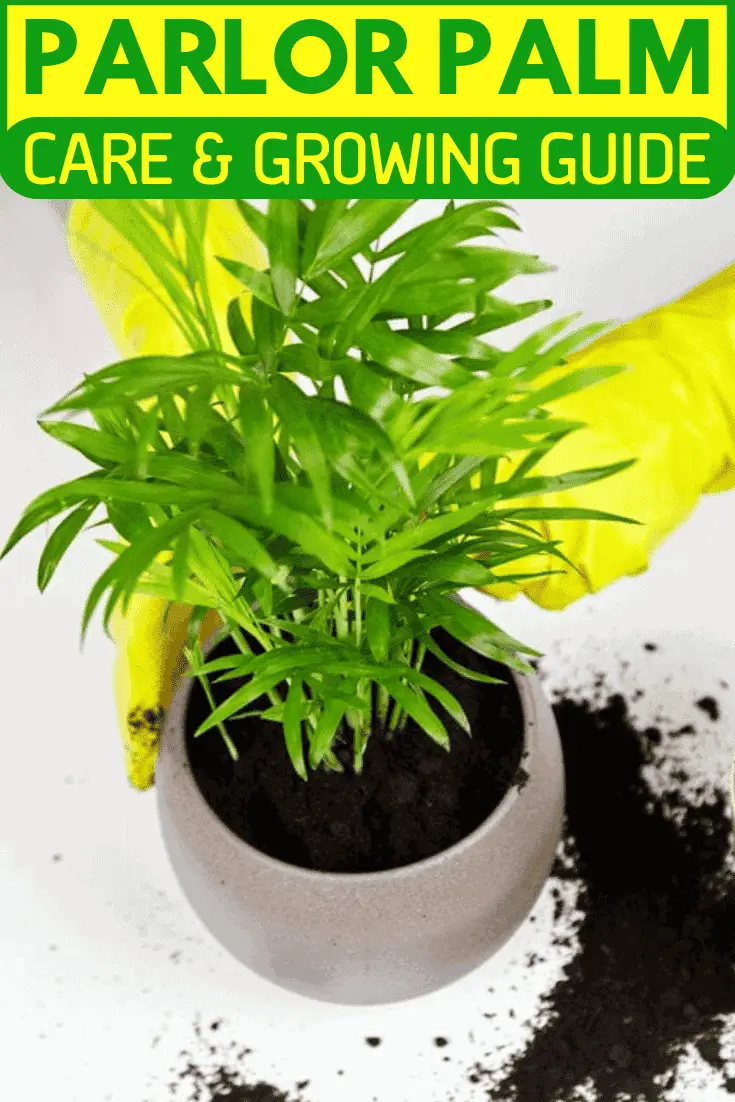When people think of houseplants, they may not know the name of the Parlor plant, but they are picturing it.
It may be one of the most common house plants to have. Along with improving the scenery at your home, it is also an air purifying plant that cuts out smog and dander from the air.
Parlor Palm Care & Growing Guide
1. Light Requirement
This plant doesn’t like too much sun. So, keep it in indirect light at all times. Avoid placing it near windows, or anywhere it can be exposed to direct sunlight. Early Morning Light is fine, just not during the summer when the sun’s rays are extreme.
2. Water
The parlor palm doesn’t like to be watered often. In fact, it’s better to underwater it then overwatered it. Between watering, allow the soil to dry. Cut back the amount of water it receives in the winter as well. Over-watering the parlor palm causes many diseases and may even kill it. When you fertilize this plant, add liquid fertilizer to the water.
3. Climate and Temperature
This Palm hates extreme temperatures. Also, the weather shouldn’t be too warm. Keep this plant around 65 f. If the temperature drops below 50 degrees, you will see the leaves curl and brown. The palm also does well with a bit of humidity. You can keep it by a humidifier, or you can occasionally mist it with a spray bottle.
4. Soil
The soil should be well-draining and not too acidic or alkaline, but it can grow in soil that’s between 5.1 to 7.5 pH. Even though the plant grows slowly, you must add fertilizer to it every other month, so it has enough nutrients to grow.

5. How to repot the Parlor Palm
Even though it grows slowly, you should repot this plant once a year to change out the old soil with fresh soil and to check its roots. You can also add another parlor plant to a container that already has one. Their root systems are shallow so they can easily share containers with multiple plants.
6. Speed of Growth
Because of this plant’s lack of direct sunlight, don’t expect it to grow very fast. They can take a couple of years for it to grow at least 3 feet tall. If you want a taller version of this plant for your living room or bedroom, then you should buy, and you’ll cut your wait time by years.
7. Height and Width of the Parlor Palm
The height of the plant can reach four feet, and only after several years of growing in the right conditions. Because of its many leaves, it’s width can expand to two to three feet. But if there are multiple plants in a container, then it’s width can extend to 5 ft.
8. Trimming
It does not like a lot of trimming, and you shouldn’t trim it anyway. The parlor Palm has going nodes on the end of its stems, so cutting these off nodes can completely stop the plant from growing. Only cut out dead or disease parts of the plant.
How do I propagate the Parlor Palm?
Yes, technically, you can propagate a parlor palm. But to propagate by seed is very difficult, and there is no guarantee the seeds will germinate. Specialists or commercial plant growers often perform propagation of this plant.
But it can be propagated by stem cuttings. First, remove the main plant from its pot and search its roots for a stem with its root system. Cut it away without hurting the other roots and place the main plant back in its place. Take your cutting and add it to a pot of soil. Then keep the soil moist and place both the old and new plants in a warm spot to try and to avoid the main plant from experiencing too much shock.

Is the Parlor Palm Poisonous?
No, The Parlor Palm is not considered to be poisonous to either humans or animals. But that does not mean that it is edible. Since this plant is not edible, if you do try to eat it, you might get a stomachache.
Can the Parlor Palm grow in Water?
Yes, the Parlor Palm can be grown in water. It is best done through an extensive hydroponic system. For the Parlor Palm to thrive in water, take off cutting and root it in water. When the roots are long, add it to a closed water system that contains liquid fertilizer. Even though it’s now in water, the room it’s in needs to be humid.
Does the Parlor Palm have flowers and how to get it to flower?
Yes, the Parlor Palm does have flowers. They are small yellow flowers that only appear after a couple of years when the palm is mature. It also produces seeds, but the seeds are not meant to grow more palms. If you want to promote flower bloom, prevent the soil from becoming too moist, and don’t forget to fertilize it consistently.
Common Diseases of the Parlor Palm
Red spider mites commonly occur in indoor plants. You will notice them when you see white and yellow spots over the fronds or small patches of webbing all over the plant. To get rid of the mites, you must rinse the plant thoroughly to remove all the mites. When the plant is dry, spray neem oil over the stem and leaves. Neem oil is an irritant to bugs, and the red mites won’t come back.
Yellow or brown fronds occur when you’re not watering the parlor palm correctly. Fronds with yellow tips mean that it is being underwatered, while fronds with brown tips mean that it is over-watered. Adjust the rate at which you water this plant.
Conclusion
- Its plant originates from Mexico.
- It is not poisonous to either cats or dogs
- The Parlor palm does not grow very fast. It can take years to reach even three feet.
- The leaves of the Parlor Palm are fronds, which can perform photosynthesis and have a role in reproduction.
- This plant needs to be fertilized often.
- Do not trim this plant because incorrect trimming can halt this plant’s growth completely.
- It produces small, whitish-yellow flowers.

Victoria is the owner and main author of hobby plants. She loves spending her free time in her garden planting and taking care of her plants. Victoria hopes you enjoy the content here!
![Majesty Palm Plant Care: [Complete Beginner's Guide] Majesty Palm Plant Care: [Complete Beginner's Guide]](https://www.hobbyplants.com/wp-content/uploads/2022/08/majesty-palm-care-300x158.jpg)
![Why Does My Majesty Palm Have Brown Tips? [EXPLAINED] Why Does My Majesty Palm Have Brown Tips? [EXPLAINED]](https://www.hobbyplants.com/wp-content/uploads/2022/08/majesty-palm-brown-tips-300x158.jpg)
![What Causes Brown Tips on A Ponytail Palm? [EXPLAINED] What Causes Brown Tips on A Ponytail Palm? [EXPLAINED]](https://www.hobbyplants.com/wp-content/uploads/2022/08/brown-tips-on-ponytail-palm-300x158.jpg)
![Mother Of Thousands Plant [Complete Plant Care Guide] Mother Of Thousands Plant [Complete Plant Care Guide]](https://www.hobbyplants.com/wp-content/uploads/2022/07/mother-of-thousands-plant-300x158.jpg)
![How Often Should You Water Pothos? [Complete Care Guide] How Often Should You Water Pothos? [Complete Care Guide]](https://www.hobbyplants.com/wp-content/uploads/2022/07/how-often-to-water-pothos-300x158.jpg)
![Can Snake Plants Live Outside? [COMPLETE CARE GUIDE] Can Snake Plants Live Outside? [COMPLETE CARE GUIDE]](https://www.hobbyplants.com/wp-content/uploads/2022/08/can-snake-plants-live-outside-300x158.jpg)
![Exotic Angel Plant Care: [Complete Beginner's Guide] Exotic Angel Plant Care: [Complete Beginner's Guide]](https://www.hobbyplants.com/wp-content/uploads/2022/08/exotic-angel-plant-care-300x158.jpg)
![Do Coleus Like Sun Or Shade: [Complete Care Guide] Do Coleus Like Sun Or Shade: [Complete Care Guide]](https://www.hobbyplants.com/wp-content/uploads/2022/08/coleus-sun-or-shade-300x158.jpg)
![Snow White Waffle Plant: [Complete Care Guide] Snow White Waffle Plant: [Complete Care Guide]](https://www.hobbyplants.com/wp-content/uploads/2022/08/snow-white-waffle-plant-300x158.jpg)
![Waffle Plant Care: [Complete Beginner's Guide] Waffle Plant Care: [Complete Beginner's Guide]](https://www.hobbyplants.com/wp-content/uploads/2022/08/waffle-plant-300x158.jpg)
![Bird Of Paradise Plant Care: [Complete Beginner's Guide] Bird Of Paradise Plant Care: [Complete Beginner's Guide]](https://www.hobbyplants.com/wp-content/uploads/2022/08/bird-of-paradise-plant-300x158.jpg)
![Purple Passion Plant Care: [Complete Beginner's Guide] Purple Passion Plant Care: [Complete Beginner's Guide]](https://www.hobbyplants.com/wp-content/uploads/2022/08/purple-passion-plant-care-300x158.jpg)